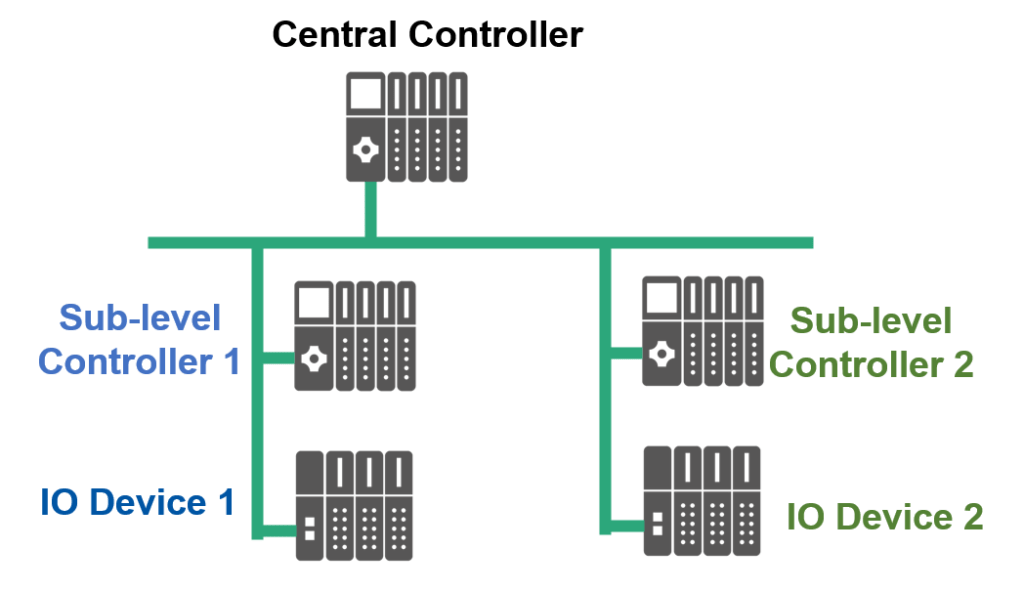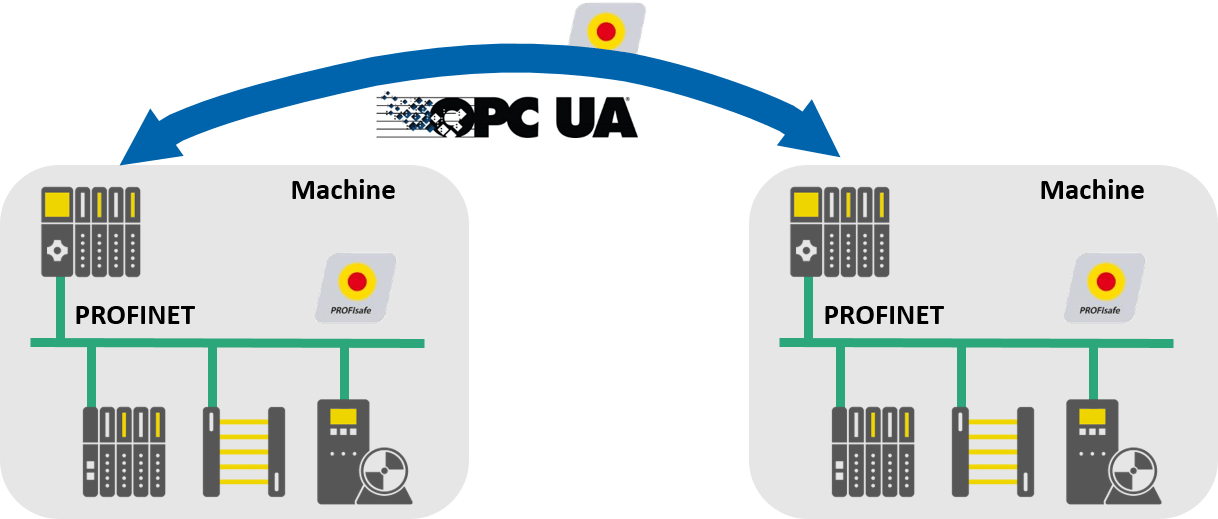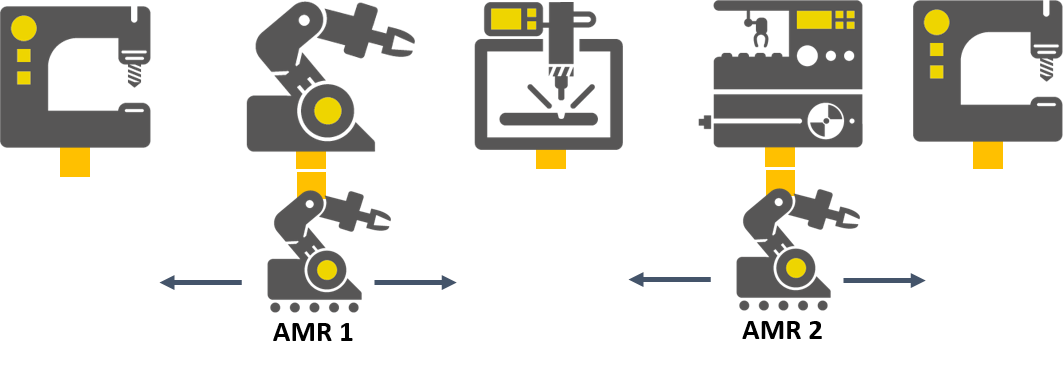Go digital.
Go PROFINET.
The communication standard
for the digital transformation.

Controller to Controller (C2C) Communication
Today's industrial networks are very complex. Industry trends drive continuous network improvements with added connectivity capabilities. Complex configurations require multiple controllers and controller to controller (C2C) communication. C2C communication enables horizontal integration and advanced network configurations:
 C2C communication between controllers from different manufacturers
C2C communication between controllers from different manufacturers- C2C communication between controllers in a hierarchical network with a central controller and sub-level controllers.
The diagram on the right shows an example of a network configuration with multiple controllers. The network has a central controller and multiple sub-level controllers. The sub-level controllers require information from the central controller; therefore, they must establish C2C connections for data exchange. Once C2C connections are implemented, the sub-level controllers use data from the central controller to communicate with their local devices.
The ultimate goal for horizontal integration within industrial networks is using a standardized C2C communication protocol. Proprietary and vendor-dependent architectures are inflexible. Also, there is a need for standardized C2C safety across manufacturers.
C2C in PROFINET Networks
The concept of machine-to-machine (horizontal) integration is nothing new for PROFINET. The very first version of the protocol was used in this fashion before being expanded to I/O data exchange. Instead of reinventing the wheel, PROFIBUS and PROFINET International (PI) decided to adopt OPC UA as the best way to integrate PROFINET from Controller to Controller. In combination with Time Sensitive Networking (TSN), OPC UA allows machines from various vendors to communicate deterministically.

C2C Safety - PROFIsafe
PI developed PROFIsafe in the 1990s. PROFIsafe provides functional safety over the bus in PROFINET networks. Today, PROFIsafe is a mature technology and the world market leader among safety-oriented protocols. However, until now, fail-safe communication via a fieldbus or Industrial Ethernet has been limited to master-slave or controller-device architectures. There is no cross-manufacturer standard for C2C failsafe communications. Currently, appropriate couplers are used for reliable transfer between machines and between the controllers used in machines.
After considering several use cases, PI decided to expand PROFIsafe to the machine level. Since PI has adopted OPC UA for C2C communication, it makes sense to expand PROFIsafe to OPC UA. A specification is now being developed for safety over OPC UA based on PROFIsafe. Finally, end-users and developers will be able to implement a cross-manufacturer standard for C2C safety with a familiar and proven safety technology.
Example: Dynamic Failsafe Connection
The diagram on the right illustrates a C2C failsafe application example. Stationary machines communicate wirelessly with Autonomous Mobile Robots (AMR). The AMRs speak to precisely one machine at a specific point in time. The transition of AMRs between machines is a challenge. Both communications between AMRs and machines require functional safety.
More use cases:
- Emergency-stop for modular machines
- Loading and unloading of machine tools
- Safe coordination of moving machine parts (e.g. crane trolleys)
- Geographically distributed machines (e.g. water & wastewater)






